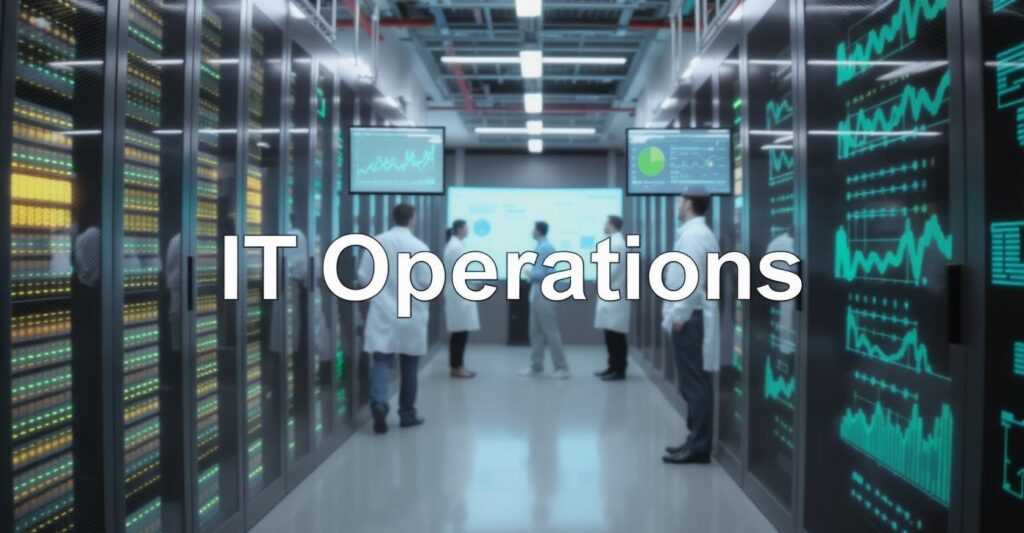In today’s fast-evolving digital landscape, the concept of digital twins has made a quiet yet powerful entry into the world of IT Operations. Initially born out of industrial applications such as manufacturing and aerospace, digital twins are now making a strong impact on enterprise IT infrastructures. As organizations strive to stay ahead in an era defined by agility and automation, digital twins offer real-time visibility, enhanced control, and predictive intelligence. It’s not surprising that more CIOs and IT leaders are taking notice of how digital twins are quietly disrupting IT operations.
As IT environments become more complex and distributed across on-premise data centers, multi-cloud platforms, and edge computing environments, digital twins provide a strategic advantage. They create dynamic virtual models of physical systems, networks, applications, or even business processes. These digital representations can simulate, monitor, and optimize every component of an IT ecosystem in real time. That is exactly how digital twins are quietly disrupting IT operations—by offering insights and foresight that traditional tools cannot match.
Understanding the Role of Digital Twins in IT
At its core, a digital twin is a real-time, data-driven virtual model of a physical entity. In IT, that entity can be anything from a server cluster to a data center to an entire network topology. Digital twins ingest operational data from physical environments and replicate their behavior in virtual environments. This means IT professionals can observe performance, predict failures, simulate changes, and make decisions with significantly less risk.
The power of a digital twin lies in its ability to model the present while forecasting the future. This makes it invaluable for managing IT infrastructure, ensuring uptime, improving performance, and supporting transformation initiatives. The rising adoption shows how digital twins are quietly disrupting IT operations by delivering proactive capabilities in a traditionally reactive space.
Enhanced Visibility Across IT Infrastructure
One of the biggest challenges in modern IT environments is achieving visibility across increasingly siloed systems. Hybrid cloud, multi-cloud, legacy infrastructure, and third-party platforms often operate in disconnected layers. Digital twins unify these layers by providing a comprehensive, real-time model that integrates all systems into a single pane of glass.
Instead of piecing together fragmented dashboards or manual reports, IT managers can use digital twins to monitor infrastructure performance, detect anomalies, and understand system behavior in context. This visibility helps reduce blind spots and supports better decision-making. It’s yet another way how digital twins are quietly disrupting IT operations through centralization and clarity.
Proactive Problem Detection and Root Cause Analysis
In traditional IT operations, problems are often discovered only after they impact users. Mean Time to Detect (MTTD) and Mean Time to Resolve (MTTR) metrics can be frustratingly high. Digital twins help break this cycle by enabling predictive analytics and real-time simulations. They continuously collect performance metrics and compare them against normal operating patterns.
When anomalies appear, digital twins can trace their origin, simulate their impact, and propose mitigation strategies. For example, if an application starts slowing down, the digital twin can analyze related compute, storage, and network resources to determine the root cause. This significantly speeds up root cause analysis and supports proactive problem resolution—proving once again how digital twins are quietly disrupting IT operations.
Optimizing Performance and Cost
Resource optimization is another key benefit of digital twins. Many IT organizations struggle with over-provisioned systems that waste money or under-provisioned resources that cause performance issues. With a digital twin, IT teams can simulate different configurations and assess how each affects workload performance, cost, and system reliability.
This allows them to make precise adjustments that optimize utilization, reduce unnecessary spending, and prevent outages. For example, a digital twin can model different virtual machine allocations across cloud providers and help identify the most cost-efficient setup. These kinds of operational enhancements highlight how digital twins are quietly disrupting IT operations with intelligent optimization strategies.
Supporting Change Management and DevOps
In a fast-paced DevOps environment, continuous integration and continuous deployment (CI/CD) require frequent changes to infrastructure and application code. However, changes can also introduce risks if not thoroughly tested. Digital twins act as a testing environment where proposed changes can be simulated in real time before being deployed.
This helps DevOps teams assess how a new configuration or application update might affect other services, dependencies, or security policies. If a simulation flags potential issues, teams can make corrections before implementation. This reduces failure rates and accelerates delivery pipelines, further illustrating how digital twins are quietly disrupting IT operations with risk-free change management.
Strengthening Cybersecurity Defenses
Cybersecurity threats are becoming more sophisticated and harder to detect using traditional tools. Digital twins bring a new layer of defense by modeling normal system behavior and identifying deviations that may indicate a security incident. By continuously simulating the IT environment, digital twins can spot anomalies early, such as unexpected network traffic or unauthorized access patterns.
Security teams can also use digital twins to run breach simulations and evaluate their response strategies. This proactive approach helps organizations remain resilient even in the face of evolving threats. It’s another example of how digital twins are quietly disrupting IT operations by enhancing the security posture with real-time modeling.
Facilitating Hybrid and Multi-Cloud Management
Hybrid IT environments are the new normal. Managing workloads across private data centers, public clouds, and edge locations adds layers of complexity. Digital twins provide a cohesive model of these environments, showing how services interact, where data flows, and where bottlenecks may occur.
This enables IT operations to manage capacity, latency, and compliance across clouds from a centralized platform. Teams can simulate migrations, assess costs, and test disaster recovery strategies—all within the twin. This flexibility is key to understanding how digital twins are quietly disrupting IT operations in hybrid landscapes.
Driving Automation with AI and AIOps
The integration of digital twins with AI and AIOps platforms is unlocking a new level of automation in IT. When a digital twin detects performance degradation or predicts a failure, it can trigger automated responses—such as spinning up new resources, adjusting load balancers, or alerting relevant teams.
This real-time adaptability allows IT operations to become self-healing and more autonomous. The marriage of digital twins with AI tools reflects how digital twins are quietly disrupting IT operations by shifting from manual intervention to intelligent automation.
Improving SLA Compliance and IT Service Management
Service-level agreements (SLAs) are crucial to maintaining customer satisfaction and trust. Digital twins help IT teams ensure SLA compliance by constantly monitoring service performance and modeling potential risks. They provide early warnings about SLA breaches and offer solutions to avoid them.
Moreover, digital twins can be integrated with IT Service Management (ITSM) systems to enhance incident tracking, problem management, and service delivery. This alignment of operations with business goals shows how digital twins are quietly disrupting IT operations with improved service reliability.
Contributing to Sustainability and Green IT Initiatives
Sustainability is now a priority for many organizations, and IT operations play a key role in reducing environmental impact. Digital twins help by modeling power consumption, cooling efficiency, and carbon footprint. They can identify underutilized servers, suggest energy-saving configurations, and support greener procurement strategies.
Organizations aiming to reduce their environmental impact will find that digital twins provide the necessary insights and tools to act decisively. This environmental focus adds another layer to how digital twins are quietly disrupting IT operations for good.
Read Full Article : https://bizinfopro.com/blogs/it-blogs/how-digital-twins-are-quietly-disrupting-it-operations/
About Us : BizInfoPro is a modern business publication designed to inform, inspire, and empower decision-makers, entrepreneurs, and forward-thinking professionals. With a focus on practical insights and in‑depth analysis, it explores the evolving landscape of global business—covering emerging markets, industry innovations, strategic growth opportunities, and actionable content that supports smarter decision‑making.



